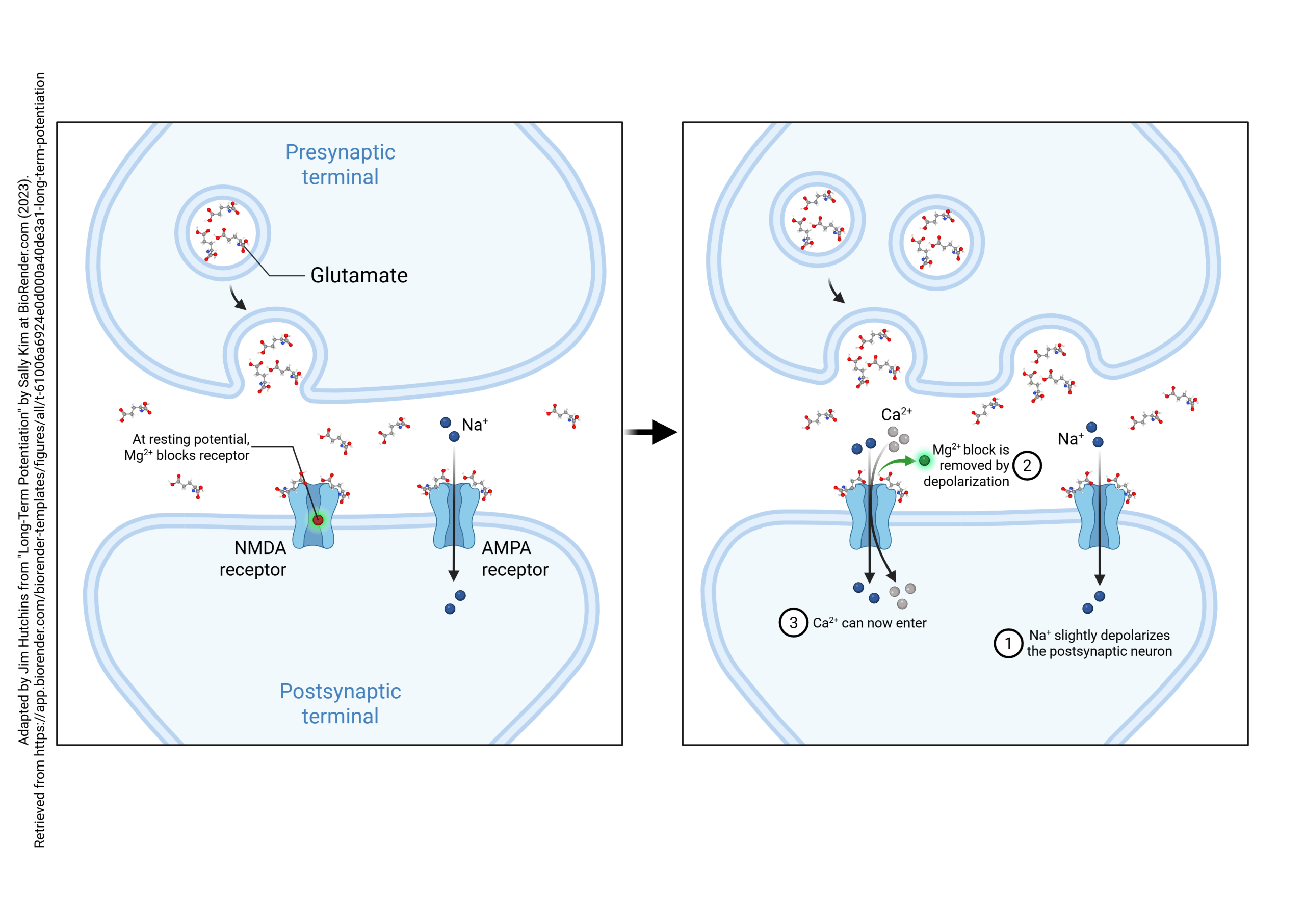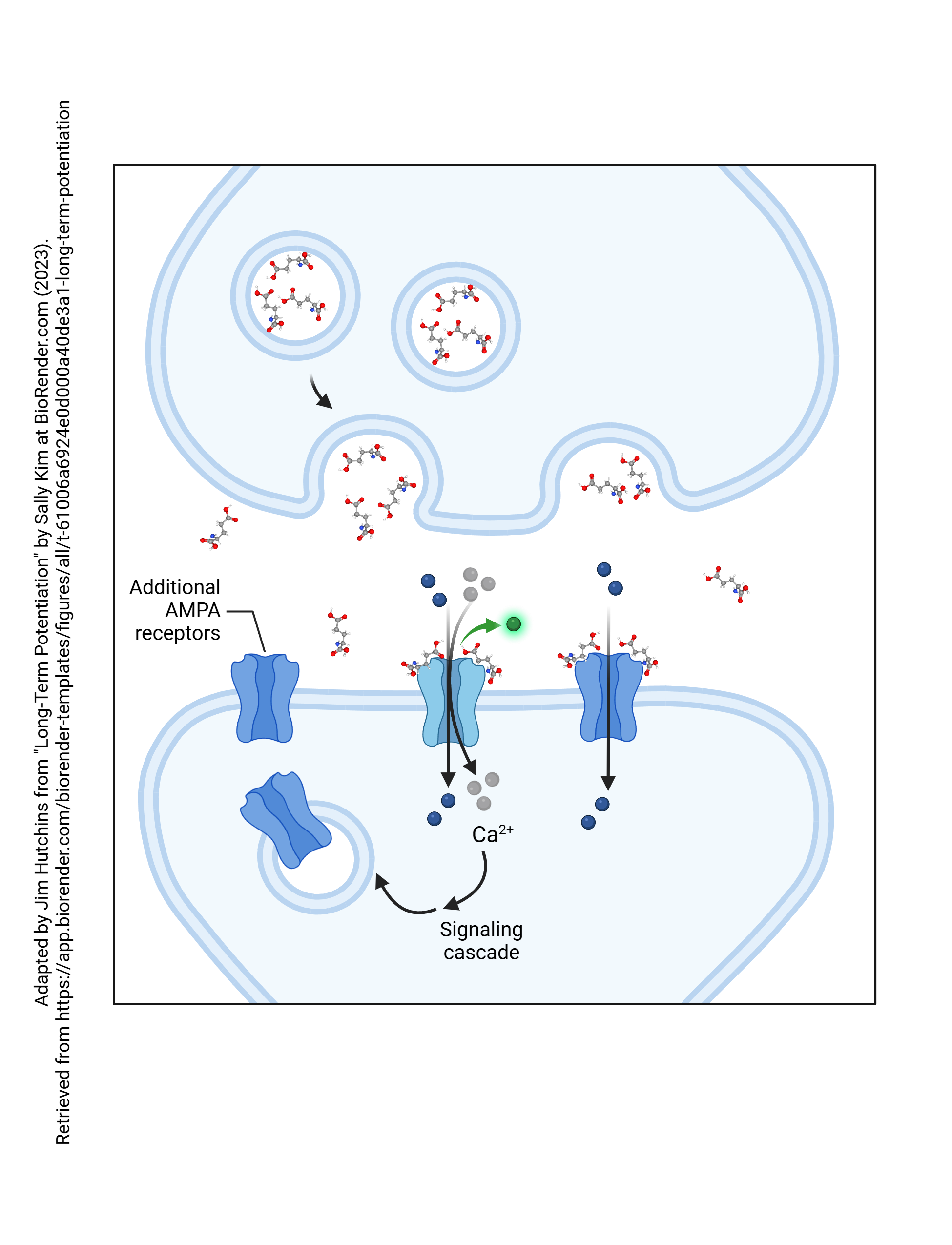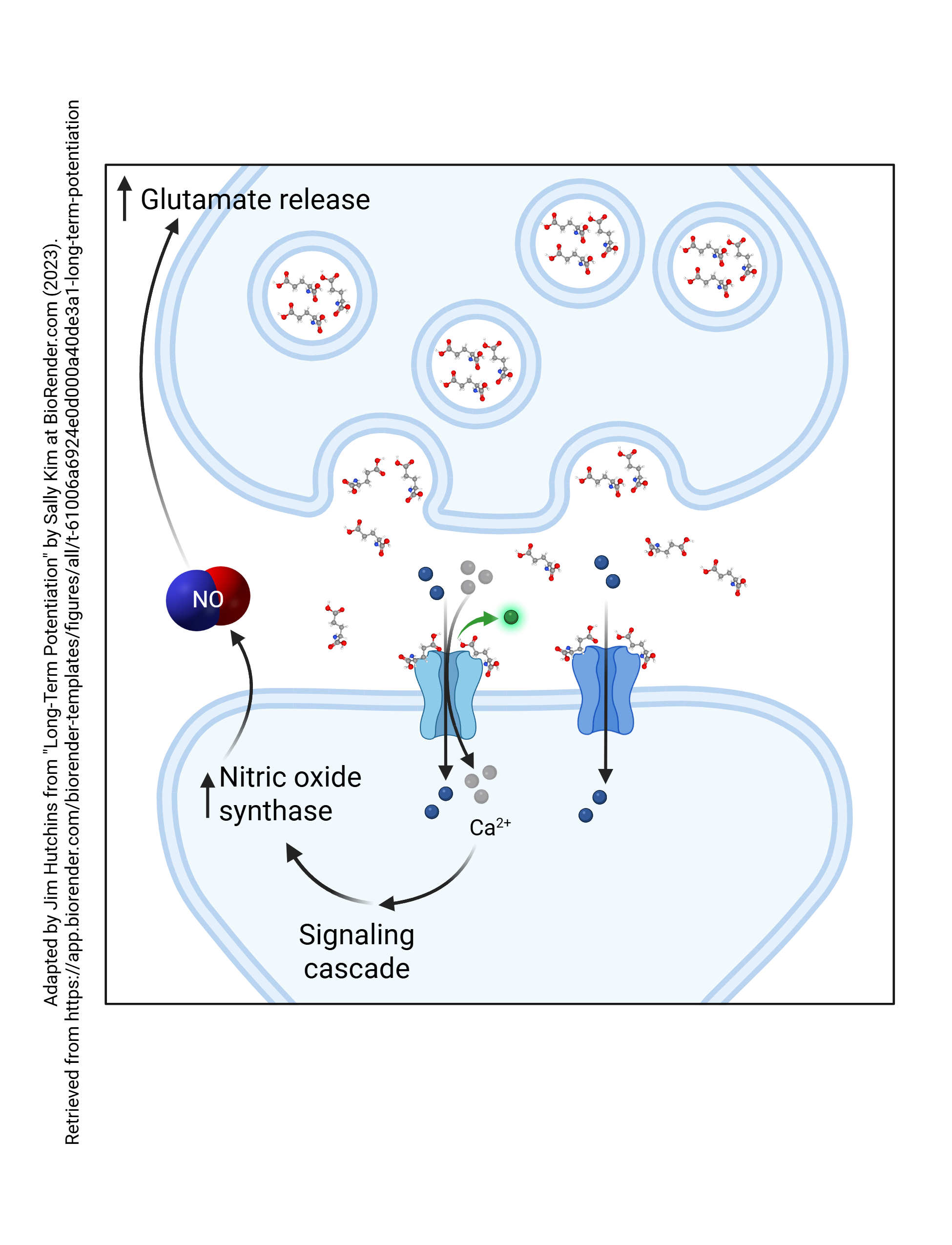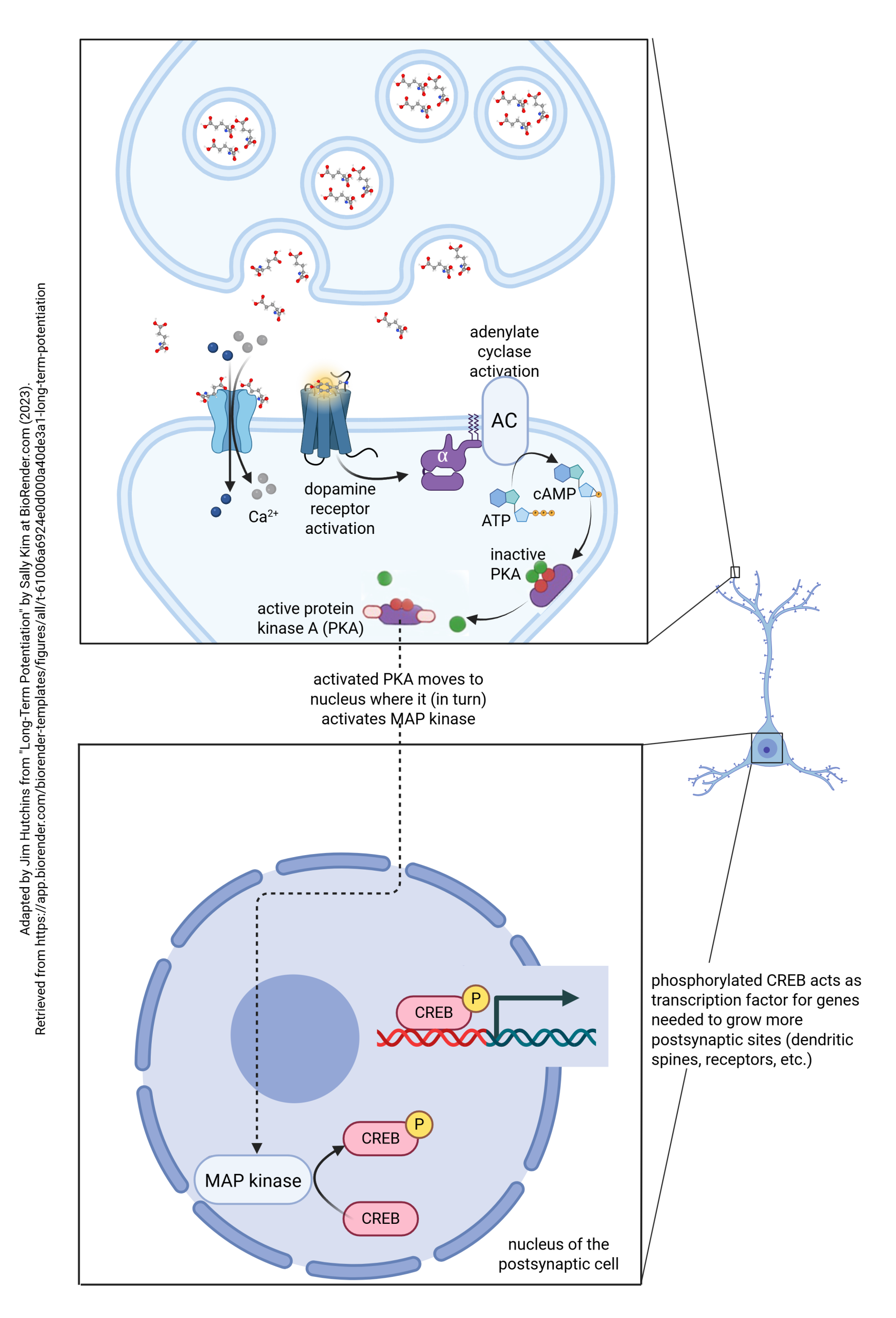Early and Late Long-Term Potentiation
Caleb Bevan
Objective 5: Explain the mechanism of both early and late long-term potentiation (LTP).
Now, let’s walk through the steps of long-term potentiation, one by one.
 Step 1. Glutamate release from the presynaptic cell activates an AMPA receptor. The AMPA receptor then changes conformation, opening a channel that allows Na+ across the cell membrane. This depolarizes the postsynaptic cell. The small depolarization is enough to dislodge the Mg2+ plug from the NMDA receptor, which then is activated by glutamate, allowing both Na+ and Ca2+ to enter the postsynaptic cell.
Step 1. Glutamate release from the presynaptic cell activates an AMPA receptor. The AMPA receptor then changes conformation, opening a channel that allows Na+ across the cell membrane. This depolarizes the postsynaptic cell. The small depolarization is enough to dislodge the Mg2+ plug from the NMDA receptor, which then is activated by glutamate, allowing both Na+ and Ca2+ to enter the postsynaptic cell.

Step 2. The entry of Ca2+ through the NMDA receptor ion channel now triggers a series of events.
Ca2+ initiates a cascade of phosphorylation events which end with transcription factors that increase the transcription of the gene for AMPA receptors. More AMPA receptors are made.
A scaffolding to hold AMPA receptors is also built just underneath the postsynaptic membrane.
Newly-formed AMPA receptors are inserted into the postsynaptic membrane. This makes the postsynaptic cell more sensitive to subsequent glutamate release; more receptors mean more ligand-gated Na+ channels which means more depolarization from the same amount of glutamate release.

Step 3. Ca2+ entry through the NMDA receptor also stimulates neuronal nitric oxide synthase (nNOS). The nNOS now makes more nitric oxide (NO), which diffuses freely across the postsynaptic membrane and acts on the presynaptic cell. NO sets into motion a presynaptic cascade which results in an increase in glutamate release. Note that now we’ve both increased the amount of glutamate released from the presynaptic cell and increased the responsiveness of the postsynaptic cell to glutamate.

Step 4. Dopamine is often called a “reward neurotransmitter” but in reality it’s better described as a reinforcement neurotransmitter. The function of dopamine is to tag LTP and make it relevant. It’s as though the dopamine says, “You got a nice feeling from this, didn’t you? Remember what you were doing so you can do it again soon.”
D1 dopamine receptors are G protein-coupled receptors with a G protein α subunit which stimulates adenylate cyclase (adenylyl cyclase) activity. Adenylate cyclase catalyzes the formation of second messenger cAMP. The cAMP, in turn, activates protein kinase A (PKA). PKA moves to the nucleus. Among the PKA targets is mitogen-activated protein kinase (MAP kinase). MAP kinase in the nucleus phosphorylates CREB. When CREB is phosphorylated, it turns on a whole set of genes needed to make more synaptic “parts” including receptors and the cytoskeleton supporting dendritic spines. Now there is an anatomical change to match the biochemical change. More synapses are formed near the synapse which was originally reinforced, and the Hebbian modification of a single synapse is now matched by the formation of an increased number of synapses, further strengthening LTP and making sure it lasts a lifetime.
 I still remember this car, a Ford Fairlane, and my older sister, mother, and father, even though 60+ years have passed since this photograph was taken in February 1962. Experiences in that car shaped my brain in a very real sense, strengthening synapses in the visual association cortex and creating new ones. Those strengthened synapses remain to this day, even though my mother and father are now dead and my sister is just a bit older than in this photograph. (Just for the record, I still look exactly like this in my memory.)
I still remember this car, a Ford Fairlane, and my older sister, mother, and father, even though 60+ years have passed since this photograph was taken in February 1962. Experiences in that car shaped my brain in a very real sense, strengthening synapses in the visual association cortex and creating new ones. Those strengthened synapses remain to this day, even though my mother and father are now dead and my sister is just a bit older than in this photograph. (Just for the record, I still look exactly like this in my memory.)
Media Attributions
- Long-Term Potentiation step 1 © BioRender adapted by Jim Hutchins is licensed under a CC BY-NC-ND (Attribution NonCommercial NoDerivatives) license
- Long-Term Potentiation step 2 © BioRender adapted by Jim Hutchins is licensed under a CC BY-NC-ND (Attribution NonCommercial NoDerivatives) license
- Long-Term Potentiation step 3 © BioRender adapted by Jim Hutchins is licensed under a CC BY-NC-ND (Attribution NonCommercial NoDerivatives) license
- Long-Term Potentiation step 4 © BioRender adapted by Jim Hutchins is licensed under a CC BY-NC-ND (Attribution NonCommercial NoDerivatives) license
- January 1962 © Jim Hutchins is licensed under a CC BY-SA (Attribution ShareAlike) license

